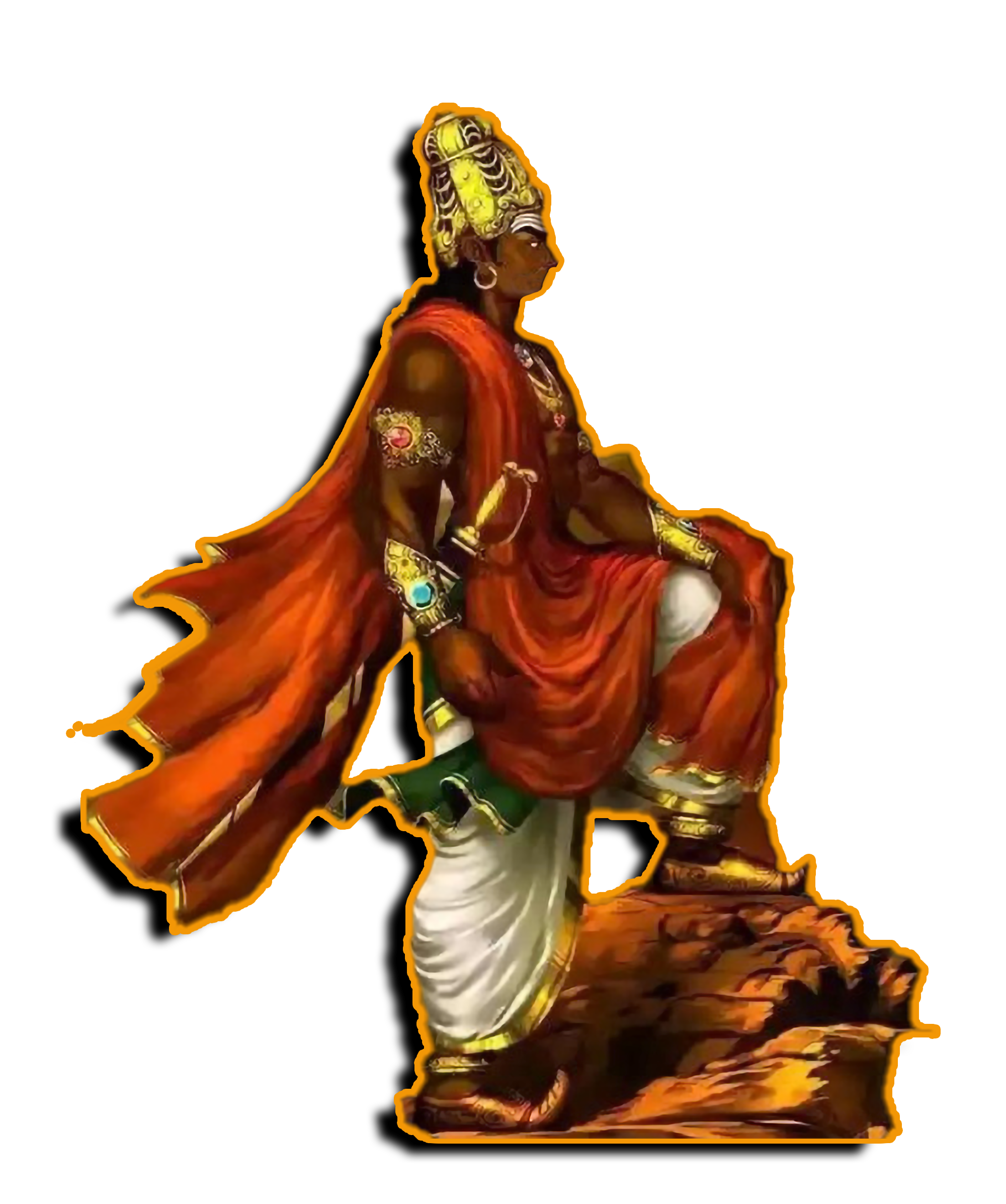Mangal Pandey was an Indian soldier who is considered a national hero in India. He played a key role in the Indian Rebellion of 1857, also known as the First War of Indian Independence. He was hanged by the British authorities on April 8, 1857, as a result of his involvement in the rebellion.
About
Mangal Pandey was an Indian soldier who was born in Akbarpur, India, on July 19, 1827 and killed at Barrackpore on April 8, 1857. His March 29, 1857, attack on British officers was the first significant episode of the Indian Mutiny, also known as the Sepoy Mutiny (in India the uprising is often called the First War of Independence or other similar names).
Pandey was born in a town adjacent to Faizabad in what is now the eastern Uttar Pradesh state of northern India, however, some believe he was born in a small village close to Lalitpur (in present-day southwestern Uttar Pradesh). He was born into an affluent, high-caste Brahman family with staunch Hindu beliefs. Several accounts claim that Pandey joined the British East India Company's army in 1849 after being approached by a brigade. He joined the 6th Company of the 34th Bengal Native Infantry, which had a substantial Brahman population, as a soldier (sepoy). Aspiring for greater achievement, Pandey considered his employment as a sepoy as a stepping stone.
Background
It may be compared to seeing the revolt as a straightforward sepoy rebellion if the underlying factors that caused it are underestimated. British paramountcy, or the notion that Britain ruled Indian politics, economy, and culture, first emerged about 1820. The British increasingly used a variety of tactics to acquire control of the Hindu princely kingdoms connected to them through what was known as subsidiary alliances. The former Indian nobility was being replaced everywhere by British officials. Lord Dalhousie used the notion of lapse, a traditional British strategy, for the first time in the late 1840s. It involves the British forbidding a Hindu monarch without a natural heir from adopting a successor and annexing his territory upon the ruler's death or abdication.
The rising unhappiness of the Brahmans, many of whom had lost their income or prestigious posts, may be added to those issues. The rate at which Hindu culture was becoming more and more Westernized and being influenced by Western ideals was a considerable source of worry. Missionaries questioned Hindus' religious convictions. The humanitarian movement sparked broader political superstructure-level reforms. Lord Dalhousie worked to emancipate women while serving as governor-general of India (1848–56). He also presented a measure to abolish all legal barriers to Hindu widows' ability to remarry. Converts to Christianity were expected to split the family estate's assets with their Hindu kin.
It was widely believed that the British wanted to abolish the caste systemThe introduction of Western educational methods put the orthodoxy of both Muslims and Hindus in grave danger.
Indians were exclusively organized in the armed forces, hence the revolution started in the Bengali army. The launch of the new Enfield rifle provided justification for the uprising. The sepoys had to bite off the ends of lubricated cartridges in order to load them. According to reports, the grease used to lubricate the cartridges was made of a combination of pig and cow tallow, making it offensive to both Muslims and Hindus to consume. The sepoys had heard this rumor.
There is no concrete proof that any of the cartridges in question really had either of these compounds on them. The belief that the cartridges were contaminated, however, increased the general opinion that the British were attempting to destroy Indian traditional values.
Case of Cartridge
Pandey's religious convictions conflicted with his desire to advance professionally. A new Enfield rifle that required a soldier to bite off the ends of lubricated cartridges in order to load the weapon was introduced into India while he was stationed at the garrison at Barrackpore in the middle of the 1850s. According to reports, the lubricant included pig or cow fat, which was offensive to Hindus and Muslims, respectively. The sepoys eventually came to suspect that the British had added fat to the cartridges on purpose.
Various reports exist of what happened on March 29, 1857.
However, the general view is that Pandey attempted to incite his fellow sepoys to revolt against their British commanders, attacked two of them, then attempted to commit suicide when restrained before being overpowered and captured. Some historical accounts claim that he could have been under the influence of narcotics at the time, probably cannabis or opium, and wasn't fully aware of what he was doing. Pandey has tried right away and is sentenced to death. His execution was originally set on April 18, but British officials moved it ahead to April 8 out of fear that waiting until then might spark a large-scale revolt.
In Meerut, opposition to the use of Enfield cartridges later that month triggered a mutiny that led to a larger uprising there in May.
In India, Pandey is revered as a freedom fighter who opposed the British Empire. In 1984, the Indian government issued a commemorative postage stamp with his image on it. In 2005, a theatrical production and a film about his life were also launched.
Mangal Pandey: Beginning and His Attacks
In 1849, Mangal Pandey enlisted in the Bengal Army. He enrolled in the 5th Company of the 34th Bengal Native Infantry in March 1857 as a private soldier (sepoy). The 34th Bengal Native Infantry's adjutant, Lieutenant Baugh, who was then stationed in Barrackpore, learned that many of his soldiers were dissatisfied that afternoon on March 29, 1857.
He also discovered that one of them, Mangal Pandey, was pacing in front of the regiment's guardroom near to the parade area with a loaded gun while threatening to shoot the first European he saw. When Pandey noticed a group of British soldiers disembarking from a ship close to the cantonment, according to evidence provided during a subsequent investigation, he quickly put his pistols away and ran to the quarter-guard house. Intoxication from bhang and discontentment among the Sepoys had alarmed Mangal Pandey.
Role of Mangal Pandey in the Revolt of 1857
The Enfield rifle, whose dirty cartridges could only be put into the weapon after being chewed off at the ends, was brought to India by the British in the 1850s. There were whispers that the lubricant in the cartridges was either pig or cow fat. Hindus value cows highly, but Muslims are forbidden from eating pork, which infuriated the Indian sepoys. Mangal Pandey was then entrusted with the Barrackpore garrison. After learning about the circumstances, Mangal Pandey, a devoted Hindu Brahmin by faith, grew enraged and made the decision to complain to the British.
It is well acknowledged that Pandey tried to motivate the other troops in his unit to prepare a revolt against the British officers. The 34th Bengal Native Infantry's adjutant, Lieutenant Baugh, who was based in Barrackpore on March 29, 1857, discovered that some of his regiment's sepoys were dissatisfied and that Mangal Pandey, a man with a loaded musket, was inciting his fellow troops to revolt. Pandey reportedly made threats to shoot the first European he encountered. The infuriated Pandey allegedly collected guns and proceeded to the quarter-guard house after learning that a detachment of British soldiers had arrived on a ship and was disembarking close to the cantonment.
The commanding commander, General Hearsey, learned of the situation and rode to the scene with his two officer sons to bring order. Instructing the sepoys to carry out their tasks while threatening to kill anyone who defied him, the general drew out his handgun. Pandey made an attempt at suicide by pushing the musket's muzzle to his chest and shooting himself while pulling the trigger while using his toe. However, he knew that he would be captured, thus this did not turn out to be fatal.
Mangal Pandey Death
Mangal Pandey was pacing agitatedly in front of the regiment's guard room on the afternoon of March 29, 1857. He appeared ecstatic as he screamed to his fellow sepoys. He vowed to shoot the first European he came across that day with a loaded firearm. Come out, the Europeans are here, and by biting these cartridges, we shall turn into unbelievers, he yelled to the other warriors. Sergeant-Major James Hewson hurried to the site after hearing of Pandey's behavior. Jemadar Ishwari Prasad, an Indian policeman, refused to place Mangal Pandey under arrest, stating that he was unable to do it on his own.
The commanding commander, General Hearsey, showed up later with two officers. After failing to organize an open insurrection among all the men, Mangal Pandey tried to kill himself in the head with his musket. But he only injured himself, leading to his imprisonment. In less than a week, Mangal Pandey was declared guilty and given a hanging death sentence. He maintained throughout his trial that he broke orders of his own free will and without any encouragement from other soldiers. Jemadar Ishwari Prasad was also given the death penalty by hanging since he had instructed the other soldiers not to hold Mangal Pandey.
The verdict states that Mangal Pandey and Prasad were executed on April 8, 1857, and April 21, 1857, respectively. The BNI's whole 34th Regiment was dissolved "with dishonor" on May 6. This was carried out after an examination showed that the soldiers had failed to contain a mutinous soldier. Sepoy Paltu was promoted to Havildar just before the regiment was dissolved, but he was murdered within the cantonment. One of the key precursors of the 1857 revolt was Mangal Pandey's uprising.
Consequences of Mangal Pandey’s Role in the Revolt of 1857
The majority of historians concur that Pandey's assault and his punishment signaled the start of the Indian Rebellion of 1857. He had a reputation for acting out among his fellow sepoys, and it is thought that this was one of the things that sparked the bigger wave of mutinies that ensued over the next several months. He had an impact on later Indian Nationalist Movement participants, including V.D. Savarkar, who saw Mangal Pandey's determination as one of the movement's founding examples.
Modern Indian nationalists portray Pandey as the mastermind of a scheme to overthrow the British, despite the fact that a recently released investigation of the events just before the escape claims that "there is no historical evidence to support any of these revisionist interpretations." During the insurrection that followed, British soldiers and people referred to a mutinous sepoy as "Pandee" or "Pandey." This is where Mangal Pandey's name originated.
Mangal Pandey Legacy
On October 5, 1984, the Indian government honored him by producing a postage stamp featuring his image. To commemorate the location where the valiant soldier attacked and revolted against the British army, a park was erected at Barrackpore. It was given the name Shaheed Mangal Pandey Maha Udyan. A cenotaph honoring the brave soldier may be seen in the Barrackpore Cantonment in West Bengal, which is located on Surendranath Banerjee Road.
Conclusion
Mangal Pandey was a soldier in the British East India Company's army who is considered to be a key figure in the Indian Rebellion of 1857, also known as the Indian Mutiny. On March 29, 1857, he attacked his British officers in Barrackpore, sparking a widespread rebellion against British rule in India. Pandey's actions and the subsequent rebellion were a major turning point in Indian history, leading to the end of the British East India Company's rule in India and the eventual transfer of power to the British Crown. Although Pandey was captured and hanged for his actions, he is remembered as a national hero in India and is celebrated for his role in the struggle for Indian independence.









